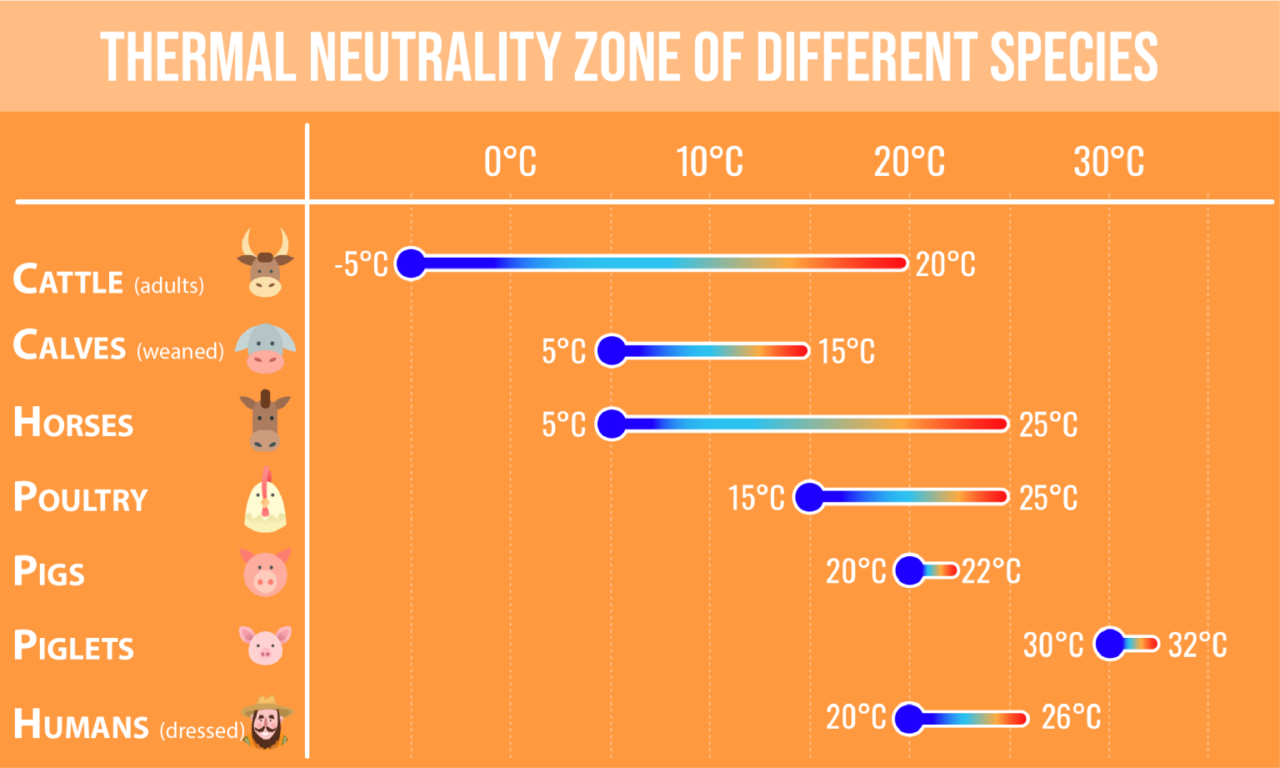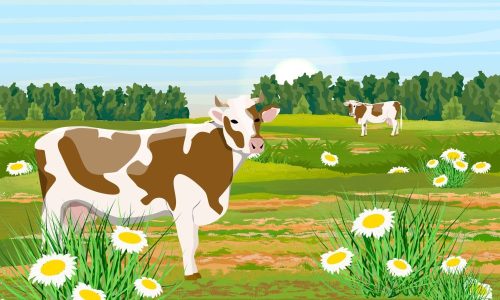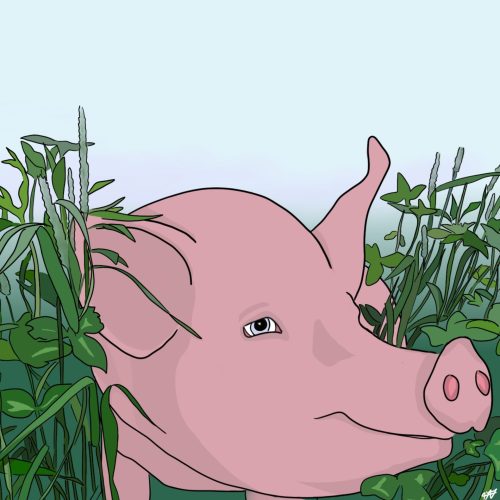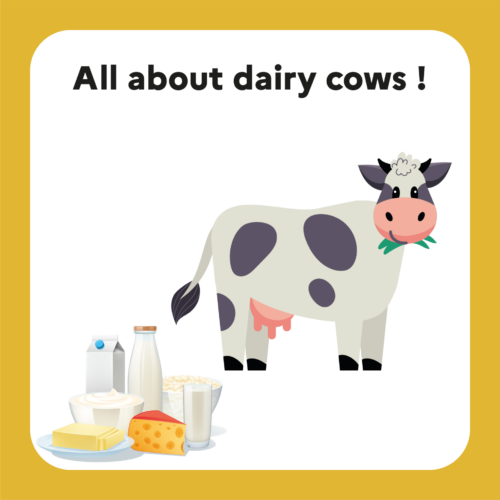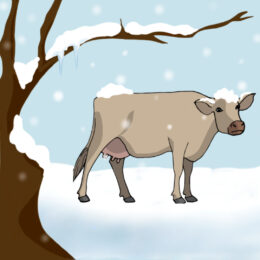

FALSE
Cows do not feel the cold in the same way that we do.
KEEP IN MIND
- Cattle are able to maintain a constant body temperature within certain limits
- Cattle’s thermal comfort zone is between -5/0°C and +20°C
- It is easier for cattle to adapt to cold than warm temperatures
Bad weather is coming… Quick! Let’s go inside and get warm. Look at the cows outside in the cold… poor things, we should bring them in!
In fact, in general, adult cattle have an easier time adapting to cold temperatures than to warm ones! Their thermal comfort is different from ours.
Like humans, cattle are able within certain limits to maintain their body temperature constant (~38.5°C for an adult bovine), regardless of the outside temperature. This is characteristic of homeothermic animals (sometimes improperly[1] called, “warm-blooded” animals).
As external temperature varies continuously, the animal will have to adapt to keep its body temperature constant, notably by modifying its behavior (moving to a shelter, increasing its physical activity, adapting its water intake, modifying its posture and body-ground contact zones, etc.) or its heat production (modulating its metabolism). If the temperature remains within certain limits, adaptation is normal and the animal’s welfare is not affected.
The temperatures associated with those limits depend on the species, breed, age, weight, physiological stage or production level…. In addition, the temperature perceived by the animal also depends on humidity and wind speed[2]. For example, since cows’ hair is not water-repellent, they are particularly sensitive to cold and damp. Thus, outside in winter, cows will be much more affected in the snow than in dry weather conditions. It is therefore difficult to set limits that are valid for all animals in all situations.
Different temperature ranges must be distinguished:
- The thermal comfort zone is the temperature range where the animal can keep its body temperature constant with very little behavioral or physical effort.
- The thermal neutrality zone, within which the animal’s heat production and energy expenditure to adapt to the outside temperature are minimal. The animal maintains its body temperature by modifying its behavior, without needing to profoundly modify its heat production. It is delimited by critical temperatures (minimum and maximum).
- Beyond critical temperatures, an animal’s capacity to adapt is exceeded and the consequences on its behavior, health and production are many. Eventually, the animal will no longer be able to regulate its body temperature and will find itself in hyper- or hypothermia, which can lead to its death.
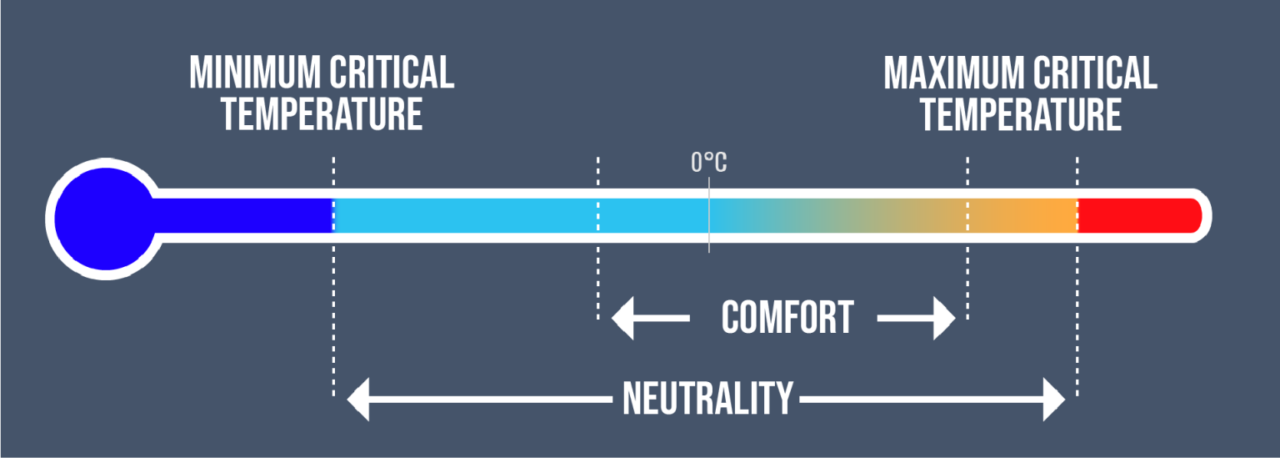
According to scientific literature, the minimum critical temperature of an adult bovine is -13°C if the weather is calm and -25°C for cows at peak milk production… so you are likely to get cold long before cows!
Conversely, maximum critical temperature is 25°C if air humidity is about 50%[3]. Production level also plays a role: the more a cow produces, the faster it will be affected by a temperature increase. Heat stress due to excessive heat is very important in lactating cows with a decrease in milk production, feed intake, lying time and fertility.
The thermal neutrality zone of an adult bovine therefore corresponds approximately to temperatures between -10°C and +25°C while its thermal comfort zone corresponds to temperatures between -5/0°C and +20°C.
These temperature ranges are important to keep in mind: within these, there is no need to worry about the animal; outside these ranges, actions must be taken to ensure its welfare.
Of course, these ranges are different for each species:

Conclusion!
In short, if you are too hot, it is very likely that cows are too! However, if you get too hot, it is very likely that the cows will too!!
For further details
EFSA 2009 Effects of farming systems on dairy cow welfare and disease, Report of the Panel on Animal Health and Welfare
These images were partly designed using Freepik.com resources
Keep in mind
- Cattle are able to maintain a constant body temperature within certain limits
- Cattle’s thermal comfort zone is between -5/0°C and +20°C
- It is easier for cattle to adapt to cold than warm temperatures
KEY FIGURE
Critical temperature below which cattle may die (in calm weather)

Outside in winter, cows will be much more affected in the snow than in dry weather conditions


